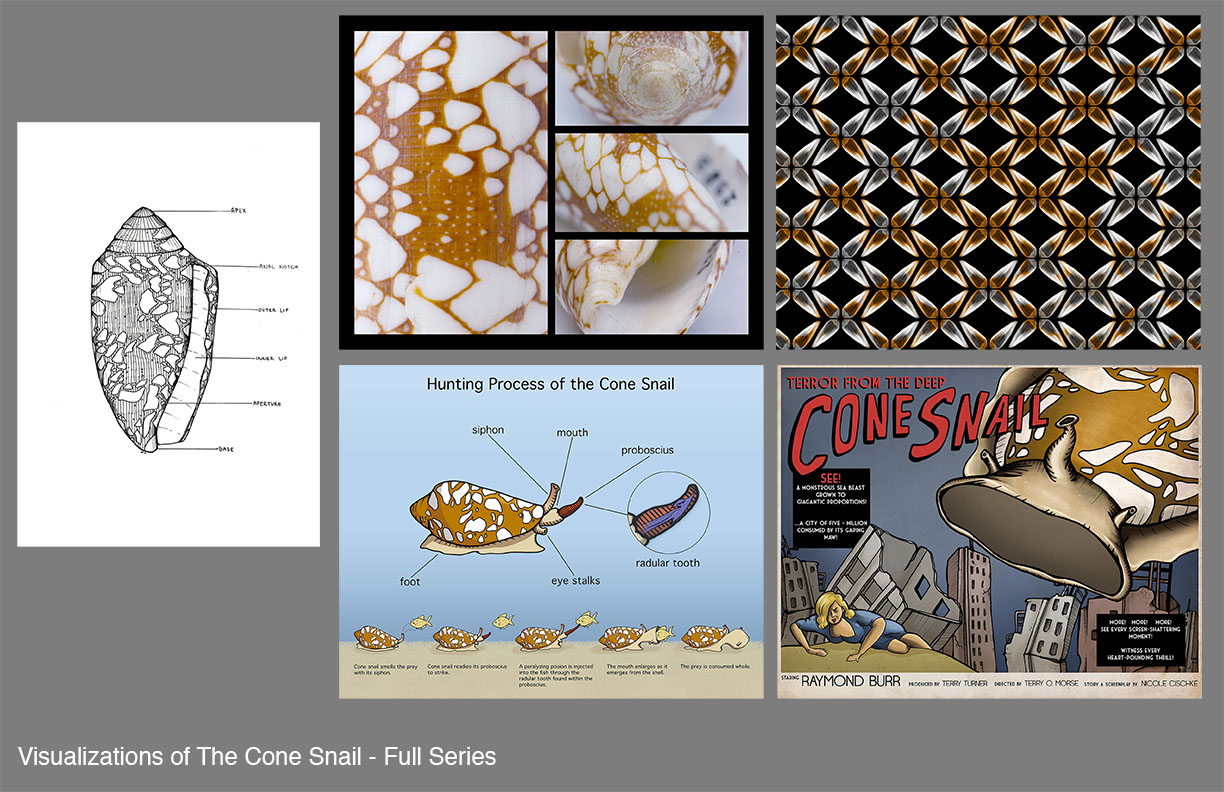2016 Honorable Mention – Jesse Adler

Visualizations of the Cone Snail
During the winter semester of 2015 I took a class in which we selected a specimen from the University of Michigan’s Museum of Zoology’s collection to serve as the subject of a series of 5 pieces: accurate scientific illustration, photographic representation, x-ray specimen, conceptual illustration, and an emotional response. I choose to spend my 16 weeks becoming acquainted with a cone snail (conus aulicus) after being drawn in by the unique pattern found on the shell. I was given two small shells to take home, and choose to carry them with me for the duration of the semester. In additional to being physically close to my specimen I was able to communicate regularly with the managers in charge of the mollusks division at the museum to supplement the research being done outside of class.
Each piece in the series focuses on different aspects of the cone snail, and utilizes a wide range of media. The first is an illustration drawn from direct observation using ink on vellum sheets. This drawing showcases the intricate pattern found on the shell, which serves as a warning to others that this particular snail was highly venomous. The second and third pieces in the series were created in tandem through the use of photography and x-rays taken at the Cancer Center on campus. These pieces strive to show aspects of the shells that aren’t immediately obvious, or may not be visible to the naked eye. The fourth piece is a conceptual illustration depicting the hunting and eating process of the cone snail. Generally snails are not thought of as dangerous or predatory creatures, but they are successful hunters, and can even be dangerous to humans. The last piece in the series served as my own emotional response to my specimen. After reading and watching videos of cones snail devour prey 2-3 times their size I became rather disgusted by the mollusk, and choose to represent them as a monster in the vein of classic horror movies. The conceptual illustration and emotional response were both created with a combination of traditional and digital media. Line drawings made using ink on vellum sheets were scanned, arranged, and colored in Adobe Photoshop and Illustrator.
